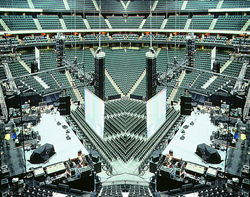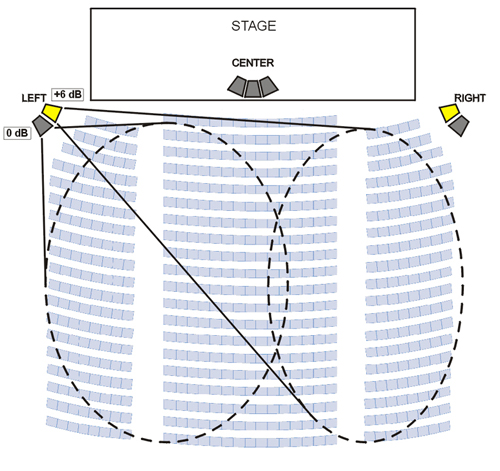
In the simplest implementation, left and right loudspeakers are toed in and across. This insures that the opposite side of the audience area is on axis and thus covered with higher output from the loudspeaker than those on the same side and nearer, who are then off axis.
It may offer an improvement, but typically suffers from degraded off-axis frequency response, as well as more sound energy being dispersed away from the audience where it’s not needed.
A better approach is to use loudspeakers with a directivity function tailored to the specific audience area to be covered.
The loudspeaker further from the listener should operate at a higher level to compensate for its longer delay. This requires a specific loudspeaker directivity function in which the output level is dependent on the angle off axis, while maintaining good frequency response.
A cluster of two or more loudspeakers can be designed to approximate this function. Figure 1 illustrates the principle. Note that the higher-level cluster components (shown in yellow) have higher directivity and are aimed toward the farther part of the audience.

The right-side loudspeakers mirror the left. The center loudspeaker helps greatly to expand the effective stereo listening area, and it needs to provide even coverage for the entire audience.
Even with the most optimum directivity control, there is a limitation in how far apart the adjacent-channel loudspeakers can be. If they are more than about 40 feet (12 m) apart, then the relative delay causes serious problems for off-center listeners, including loss of intended localization and a noticeable echo.
The use of a left-center-right system increases the possible width of the front sound stage, as long as channel assignment or panning is kept pair-wise to adjacent channels (left to center, or center to right), so that the same signal is not heard from both left and right.
Long Distance Surround
A well-balanced left-center-right sound system is a beautiful thing, and there are many examples of them producing great stereo sound for an entire audience.
